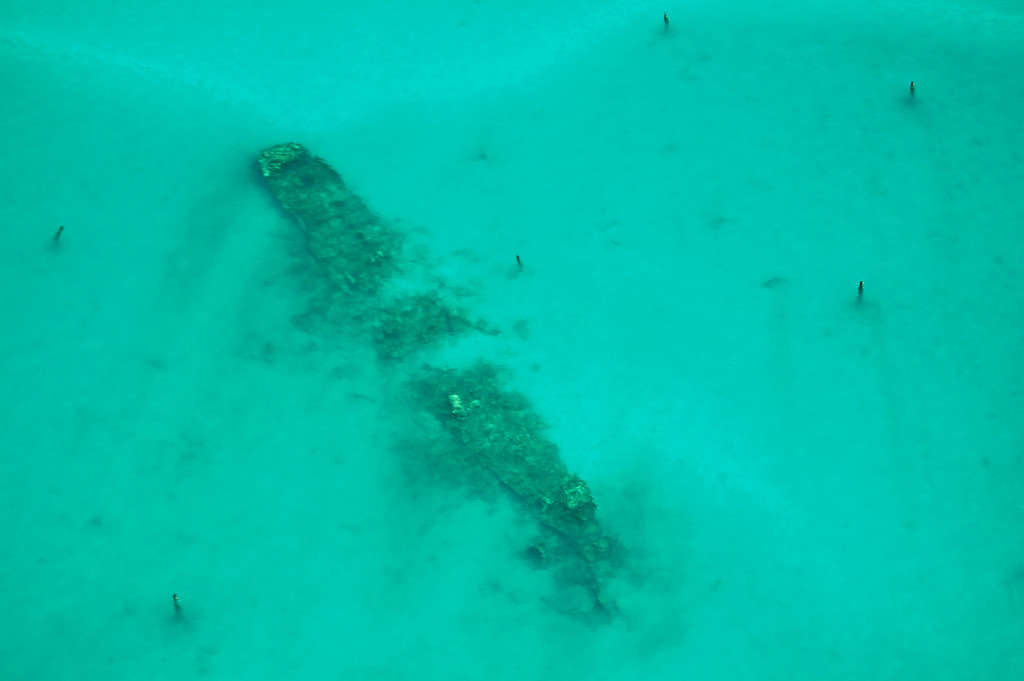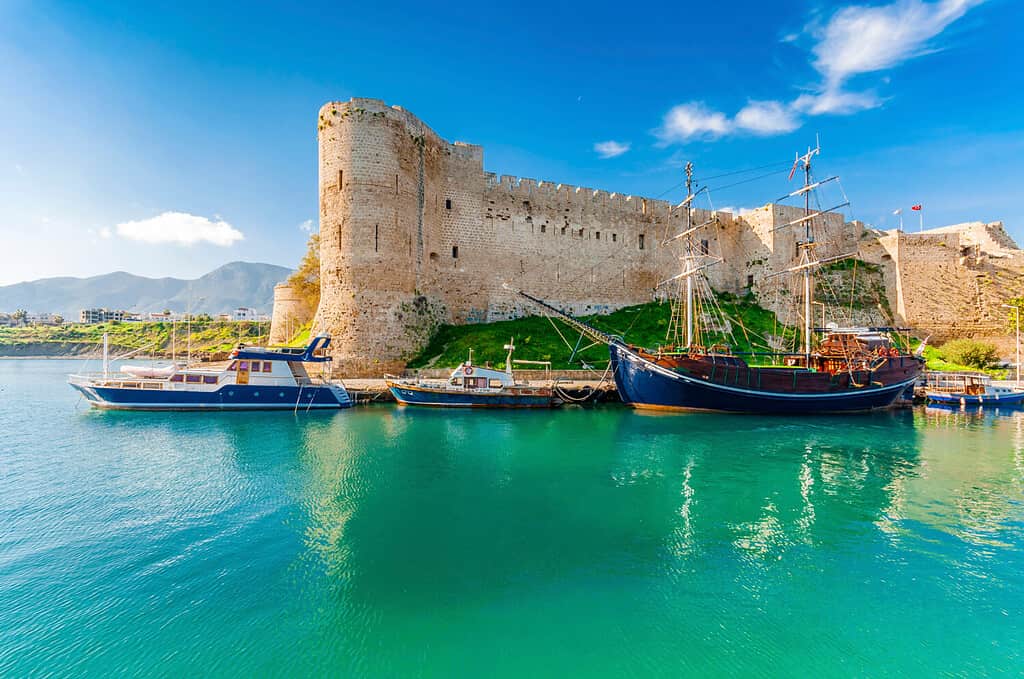In a world made up mostly of water, sailing, and sea travel were inevitable developments for our ancestors. They needed ships and seafaring knowledge to quench their thirst for exploration. Historians believe humans have been sailing for up to 50,000 years, particularly in the Mediterranean Sea. However, as drawn as we are to the sea, travel amongst the waves has always included its own perils. Storms, strong waves, and other disastrous forces faced off against sailors and their ships. Commonly, outside forces won, leaving ships sunk to the bottom or dashed to pieces.
For as long as we’ve sailed, there have been shipwrecks. Some of the wrecks we’ve rediscovered date back thousands of years, remaining a testament to our desire for sea travel. Here, we’ll dive into the seven oldest shipwrecks ever found. Hope you brought your swimsuit!
1. Dokos Shipwreck — 4,500 Years Old

The oldest discovered shipwreck, the Dokos’ wood had decomposed almost completely by the time scientists discovered it.
©Maisna/iStock via Getty Images
Thought to be a merchant ship, the wood of this wreck had already decomposed completely by the time marine archeologists found the site in 1975. However, the ship’s cargo of various ceramic pieces remained, as did its two anchors. Scientists followed these clues to study and excavate what is thought to be the oldest underwater shipwreck discovery.
The ship was found off the coast of Greece, near the island of Dokos. The variety of ceramic items on board — which ranged from vases and urns to cups and kitchen utensils — leads to the theory that this ship sank along a trade route. This route connected South Euboea, a Greek island, to small communities along the Saronic and Argolid Gulfs to the west.
2. Uluburun Shipwreck — 3,400 Years Old

This wooden replica of the Uluburun shipwreck gives us a glimpse of ancient ship-building techniques.
This luxury cargo and passenger ship sank near Kas, Turkey, in what is assumed to be a freak storm. Divers discovered the wreck in 1982, and the Institute of Nautical Archeology and archeologist George Bass led the excavation. The teams meticulously excavated and recorded each layer of the Uluburun wreck and uncovered a truly international discovery.
The ship’s cargo included luxury goods from at least seven different ports around the Aegean and Mediterranean. The complete discovery unearthed 350 copper ingots from Cyprus, Baltic amber nuggets, true African ivory, ostrich shells, more than 200 glass ingots in a variety of colors — including hard-to-find and expensive cobalt and purple — and much more. Musical instruments and other personal items also pointed to the presence of passengers on the ship when it sank.
Both the Uluburun and Cape Gelidonya shipwrecks led George Bass to publish the controversial interpretation that the Phoenicians played a major role in Bronze Age seafaring. The belief at the time lauded the ancient Greeks, called Mycenaeans, as the main traders of the time. However, the Phoenicians, who originated in the area of modern Lebanon, are now recognized as another superpower of the area — largely thanks to George Bass’ interpretations and findings.
3. Cape Gelidonya Shipwreck — 3,200 Years Old

To excavate the Cape Gelidonya wreck, archeologists repurposed their techniques used on land to explore and preserve the site.
Found in 1959, this early Phoenician ship is thought to have collided with a rock pinnacle that tore open its hull. The ship spilled its cargo in a line as it quickly sank, coming to rest off of Cape Gelidonya in Anatolia, Turkey. This made for a unique find when sponge divers initially discovered the artifacts and brought them to the attention of marine archeologists. The artifacts, which consisted of copper ingots, metal scraps, and metal working tools, led the scientists to believe someone on board was either a metal smith or a tinker.
The scientists who worked on the Cape Gelidonya shipwreck brought what they knew of land excavations to the wreck. They excavated each layer one at a time, measuring and recording data before disturbing the next layer. This technique was so successful it paved the way for other successful studies of ancient wrecks. This project’s success led to the establishment of both the Bodrum Museum of Underwater Archeology and the Institute of Nautical Archeology. In addition, two future spearheads of underwater archeology worked among the team. George Bass, then a graduate student, is now known as the father of nautical archeology. Also, Joan du Plat Taylor, a future pioneer in maritime archeology, led the team.
4. Bajo de la Campana Shipwreck — 2,700 Years Old

The sea floor off the coast of Spain, where scientists found the Bajo de la Campana shipwreck, changes depths dramatically, posing a significant hazard for ships.
©Damocean/iStock via Getty Images
A merchant ship ran afoul of a submerged rock reef off the coast of Spain near Cartagena. Barely enough wood remained to positively carbon-date the ship, which turned out to be a Phoenician ship. However, a great deal of its cargo remained and lay in wait in a sea cave. The wreck was found in 2007, and the excavation continued through 2011.
Excavators believe the Bajo de la Campana wreck carried supplies and trade goods en route to a Phoenician colony in Spain, further expanding our understanding of the reach and might of the Phoenicians. In the period between George Bass’ excavation of the Uluburun wreck and the discovery of this wreck, archeologists discovered several Phoenician colonies and outposts, some as far north as modern Cornwall in the Southwest of England.
The cargo discovered at the Bajo de la Campana wreck included elephant ivory tusks, some of which are inscribed with Phoenician letters. In addition, scientists recovered Baltic amber, red ocher, perfume bottles, various bronze items, and more. Some of the goods were marked with Phoenician graffiti or manufacturer marks, conclusively pointing to the origin of the goods and, by extension, the ship.
5. Odysseus Shipwreck — 2,400 Years Old

This close-up of the Siren Vase depicts the shape of the vessel found in the Black Sea, the oldest intact shipwreck ever found, now called Odysseus.
A relatively recent find, this ancient Greek shipwreck was discovered in 2018 at the bottom of the Black Sea near Bulgaria. A unique feature of the Black Sea creates the perfect conditions to preserve organic matter. Its water contains next-to-zero dissolved oxygen, what scientists call “anoxic.” Without oxygen in the water, natural materials like wood don’t decompose. Due to this, over 60 shipwrecks have been found in the Black Sea nearly intact, hence its nickname as the “shipwreck graveyard.”
After carbon-dating a piece of the discovered ship, this wreck has been confirmed as the oldest intact shipwreck to date. Its amazing condition has allowed scientists a more in-depth opportunity to study the ship’s design and construction. Now known to be a Greek trading vessel, the ship’s design has only been seen in a scene painted on ancient Greek pottery. The vase, known as the “Siren Vase,” depicts a scene from Homer’s epic The Odyssey, where Odysseus ties himself to the mast of his ship to resist the call of sirens.
The shipwreck has been dubbed “Odysseus,” thanks to its similarity to the painted vase. Scientists continue to study the ship’s construction, which has the potential to change what we think we know about shipbuilding and sailing in the far past.
6. Kyrenia Shipwreck — 2,300 Years Old

The Shipwreck Museum, located next to the pictured Kyrenia Castle, displays the remnants of the Kyrenia wreck, which is the oldest shipwreck found in Cypriot waters.
©Nejdet Duzen/Shutterstock.com
A Cypriot diving instructor first discovered this Greek-era ship in 1965 near the Kyrenia port in Cyprus. Since then, it had been completely excavated and recreated, thanks to the great condition the wreck was found in. The Shipwreck Museum displays the remnants of the shipwreck. In addition, historians completed the latest full-size replica of the ship — called the Kyrenia Liberty — in 2002.
The ship and its cargo date back to the days of Alexander the Great. The remarkably well-preserved hold of the ship held a treasure trove. Scientists recovered over 400 intact wine carafes, 9,000 shelled almonds perfectly preserved in storage jars, and grain-grinding stones. Found less than a mile from the safety of port with eight spear points embedded in its hull, archeologists believe the ship sunk due to a pirate attack.
7. Antikythera Shipwreck — 2,100 Years Old

Thought to be the oldest ever analogue computer, the Antikythera mechanism was found aboard the ancient shipwreck.
©DU ZHI XING/Shutterstock.com
This Roman-era shipwreck found its end off the coast of Point Glyphadia on the Greek island of Antikythera. Discovered in 1900 by a team of sponge divers, the wreck led to the recovery of several unique artifacts, including bronze and marble statues, a bronze lyre, and pieces of glass work. Divers also found lead sounding weights, which helped sailors determine the water depth and navigate. In fact, the sounding weights from the Antikythera wreck were the first to be found in the waters around Greece.
Also aboard the Antikythera shipwreck, divers found a badly corroded piece of bronze that featured a gear wheel and Greek inscriptions. The Antikythera mechanism, as it’s now known, is thought to be the oldest example of an analogue computer. Archeologists now believe that ancient sailors used the mechanism to predict the positions of the stars and eclipses. They then used that knowledge to improve their navigational techniques.
Exploring the Antikythera wreck has proved difficult, and much of it remains undocumented. The wreck is simultaneously too deep for SCUBA divers, but too shallow for submersibles. However, advances in technology may make a full excavation possible in the future. Who knows what other treasures and discoveries are waiting to be uncovered on the Antikythera shipwreck.
Summary
The sea is a dangerous place to be, with hidden rocks and reefs, sudden storms, and greedy pirates galore. However, for ancient traders, sea routes led to lucrative trips and further expansion of their culture. We’ve learned a great deal about our history by studying the remnants of their misfortune, making shipwrecks a valuable glimpse into the far past.
| Shipwreck | Location | Age | Year Found |
|---|---|---|---|
| 1. Dokos | Dokos Island, Greece | 4,500 years | 1975 |
| 2. Uluburun | Kas, Turkey | 3,400 years | 1982 |
| 3. Cape Gelidonya | Anatolia, Turkey | 3,200 years | 1959 |
| 4. Bajo de la Campana | Cartagena, Spain | 2,700 years | 2007 |
| 5. Odysseus | Bulgarian Coast | 2,400 years | 2018 |
| 6. Kyrenia | Kyrenia port, Cyprus | 2,300 years | 1965 |
| 7. Antikythera | Antikythera Island, Greece | 2,100 years | 1900 |
Thank you for reading! Have some feedback for us? Contact the AZ Animals editorial team.








